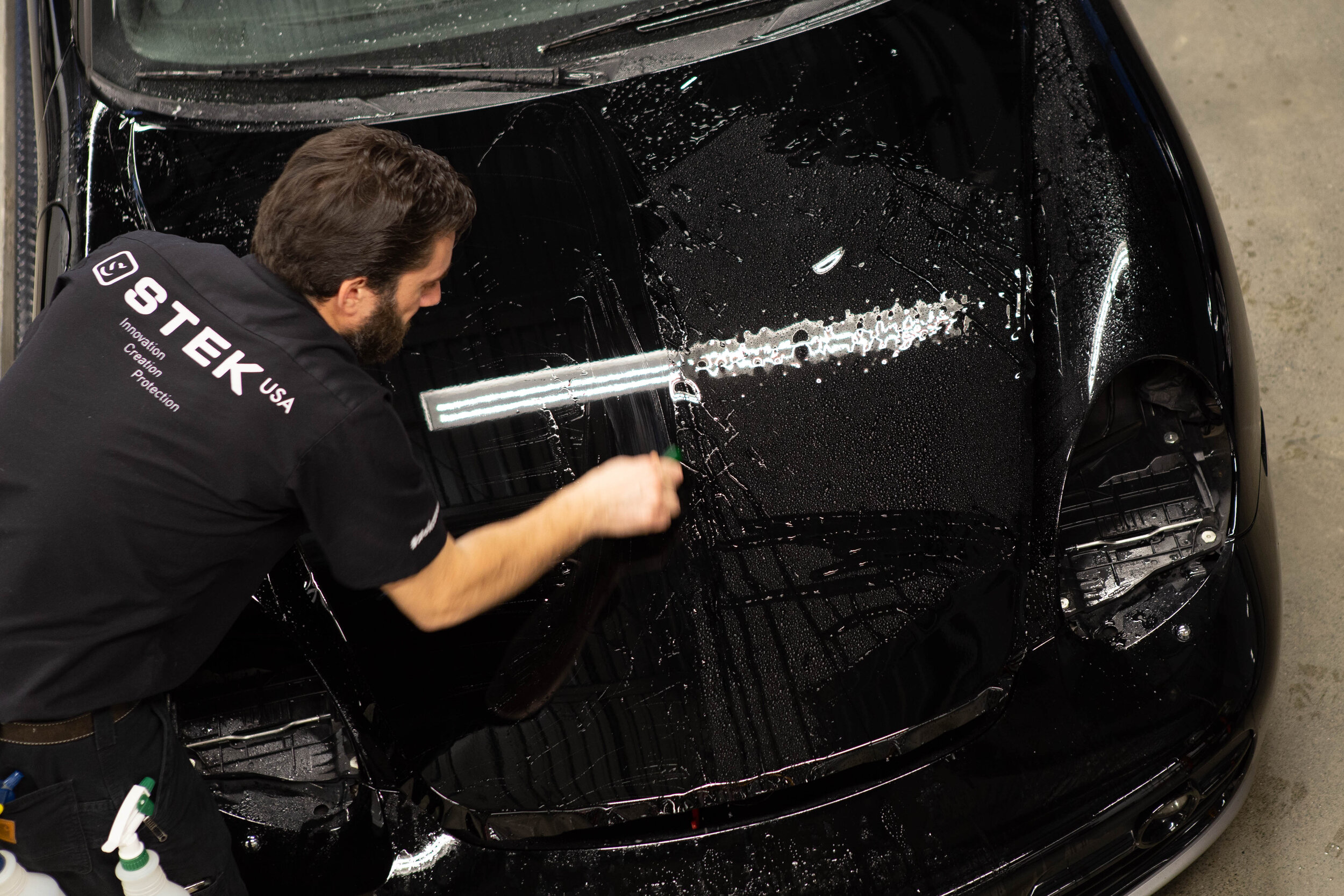Do I really need paint protection film?
"I’ve seen clear bras and I hate how they look."
Well, modern paint protection films have become so clear and glossy that, when applied correctly, they look like they completely disappear into the paint itself. You can get a clear bra that's fast and cheap, or you can pay the price for a good installation of something that lasts. Many installers choose to use a computer-templated pattern that is designed to easily fit any vehicle; this is the fastest way to have the film installed. However, this does not offer any real level of hand-tailored design or installation—and the edges of the film are also a different story. Paint protection film is a three-dimensional object; although thin and transparent, you will still notice edges, and a good installation will take this into account. It's much like how a properly hand-tailored suit will, of course, fit so much better than something you order online, with only the hope that it conforms to your exact body shape. This is why I always recommend precision-fit protection. And if you like how your car looks when it's new, you'll definitely appreciate a clear bra when it's old. Paint protection film provides an unparalleled barrier of protection: it is the one true way of making sure that nothing touches your paint.
Where should I protect my car?
The most obvious answer is the front end. The front bumper is typically a flat and brunt impact zone. Additionally, the paint on a plastic bumper is not bonded as strongly as it is on a metal hood or fender. Plus, although the most damage occurs near the bottom of the car, the hood and fenders catch the eye immediately, so any rock chips will be extremely noticeable. You also don't want to forget your lights—while modern headlights typically don't break from rock impact, they do become pitted, so light protection film is a must. And where are these flying rocks and debris coming from? They are kicked up from the tires of other cars—typically of those in front of you.
Don’t forget what happens when rocks and debris are kicked up from your own tires. On top of damaging the lower sections of your fenders, they hit the rocker panels, the fronts of your rear tires, the lower sections of your doors, and even the bumper behind your rear tires. If you drive your car in the rain and park it inside the garage to dry, you can clearly see where your car is kicking up dirt and debris. These are your high-impact zones. And it’s not impossible to miraculously get a rock chip on your trunk, either. Trust me, I’ve seen it. It actually happens.
Typically, if you want to wrap all of the high-impact areas of your car, we recommend treating the rest of the vehicle and adding further protection and gloss on top of the film with a ceramic coating. If you want protection beyond the high-impact areas, we recommend wrapping the vehicle completely. In the case of STEK DYNOshield, a nanoparticle coating is infused into the film during the manufacturing process, granting it hydrophobic, stain-resistant, and self-healing properties. This all makes DYNOshield the glossiest, most durable, and most low-maintenance material in the industry. It’s unmatched by any other type of aftermarket ceramic coating.
Not all paint protection films are tailored the same. The installation process requires a lot of stretching and manipulation of the film, as the originally flat film must conform to the three-dimensional shape of an automobile. However, in order to provide the best protection, the film cannot be stretched to its limitations. Instead of being tightly wound, like a stretched-out rubber band, it should ideally be as relaxed as possible.
Why STEK DYNOshield?
STEK boasts a highly unique and quality-controlled method of manufacturing paint protection films. Each product in the DYNO family contains a special nanoparticle coating that provides self-healing abilities, as well as hydrophobic and damage-resistant functions. As paint protection film is composed of a very porous material, the sealants help prevent staining and yellowing. Furthermore, since DYNOshield is infused with this technology during the manufacturing process itself, it is extremely durable—and, in the case of a warranty claim, will never cause a conflict of interest. Issues may arise when you first install a film from Brand A, and later an additional ceramic coating from Brand B. If there is a warranty issue, who is to blame? Will the film company deny your claim because you had an aftermarket product applied on top? With Metropolitan Detail and STEK, you can trust that we will stand behind your installation.
John Kleven
STEK USA




